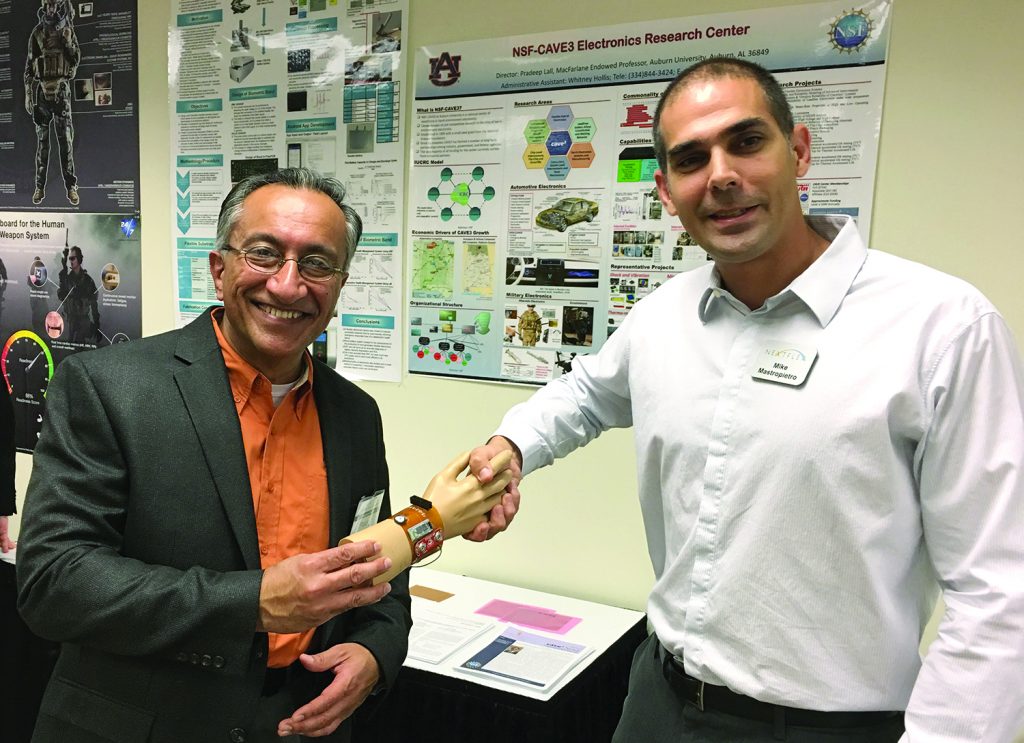 Editor’s note: Each issue, a faculty member will share their current research project in their own words, opening up a window to our leading researchers who are improving quality of life and fostering economic competitiveness.
Editor’s note: Each issue, a faculty member will share their current research project in their own words, opening up a window to our leading researchers who are improving quality of life and fostering economic competitiveness.
We now are working on the development of a technology product demonstrator consisting of a multi-sensor wearable biomedical band along with a smartphone app. The intended application for the technology product demonstrator is for operators working on the inspection and maintenance on aircraft fuel tanks. The fuel tanks are small, confined spaces in the aircraft, which reside in the fuselage and inside the wings of the aircraft. Inspection and maintenance operations require the operators to climb inside the confined space of the fuel tanks. Oxygen levels in a confined space may become depleted due to oxidation or depletion by another gas. The typical concentration of oxygen in the environment is 20.9 percent. When oxygen levels drop from 19.5 percent to 12 percent, judgment is impaired and personnel may experience an increased pulse and fatigue. If levels drop further, from 12 percent to 6 percent, fatigue, nausea and vomiting will occur.
A dual-use aspect of the technology may include the following applications: monitoring of vitals of workers in high-heat environments to determine when workers need to come out of the heat before the effects of heat stress become a physical risk factor and monitoring of an individual worker in a hazardous environment.
The technical objective is to design and fabricate a band in wear-and-forget format with multiple biomedical sensors including GPS, pulse oximetry, pulse-rate and electromyography sensor integrated with a microcontroller and Bluetooth communications link on a flexible high-density substrate. In addition, an additional objective of the project is to design a smartphone app with the required logic for processing the vital signals of the operator with capability of autonomous decision making for contacting emergency services with the location of the operator if the operator’s wellbeing has deteriorated.
 The approach will involve the design of flexible substrate for the assembly and integration of sensors with a microcontroller for the acquisition of signals and a Bluetooth module for the transmission of vital data to the paired smartphone.
The approach will involve the design of flexible substrate for the assembly and integration of sensors with a microcontroller for the acquisition of signals and a Bluetooth module for the transmission of vital data to the paired smartphone.
The multi-sensor biomedical band will be worn by the operator working in a confined space and it’s multiple sensors will measure for the loss of blood oxygenation resulting from depletion of oxygen in the environment in the fuel tank, abrupt changes in the pulse rate resulting from anxiety or claustrophobia, loss of consciousness, myocardial infarction, stroke, bradycardia or aneurysm. Additional sensors can be added if needed to address a broader range of medical conditions. The raw data from the sensors is gathered by the embedded microcontroller on the wearable band through the GPIO and transmitted via the Bluetooth sensor on the USART port of the microcontroller to the paired smartphone.
The LifeSaver App is installed on the smartphone and receives the transmitted data via the Bluetooth module and processes the data checking for imminent danger to the operator. If the status is OK, the app continues to monitor silently. However, if the operator is in imminent danger, or in need of medical attention, the app autonomously contacts emergency medical services with the GPS location of the operator and details the condition of the operator and the nature of the medical condition.
Emergency medical personnel can be dispatched to the location of the operator immediately without any action needed on the operator’s part.
Pradeep Lall is the director of the Harsh Environment Node of NextFlex and the CAVE3 Electronics Research Center and is the John and Anne MacFarlane Professor of mechanical engineering.